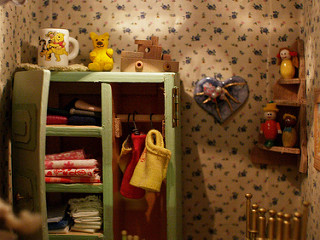Main Content
Lesson 1: Overview of Autism Spectrum Disorders
Learning Challenges Associated With ASD
Generalization and Maintenance
Individuals with ASD may require explicit, systematic instruction. The ultimate goal of instruction for individuals with ASD is generalization, or the transfer of skills. When designing instruction, you want to make sure that the skills you teach will be transferred or generalized to other environments and with other people. For example, you might hear teachers say, “You know, he'll only sit in his seat with me” or “He will only respond appropriately with me.” You might think that this is a sign of success, but it's really not. You want the student to be able to respond with you, with his or her parents, and/or with a community worker out in the world. If you work with a student on telling time, you'll want him or her to be able to tell time on different clocks/watches. I You'll also want him or her to tell time at home, at school, and in the community. Remember, the ultimate goal of instruction is making sure the students can function anywhere they go based on the skills that have been taught.
Additionally, once a child learns a skill, it is important for him or her to maintain the skill over time (maintenance). Individuals with ASD often display deficits in maintaining previously acquired skills, so the ability to perform a particular skill over time cannot be assumed. Individuals with ASD need explicit training for generalization and maintenance to occur.
Challenges Associated With Core Deficits of ASD
Executive Functioning
Executive functioning is the ability to organize and plan using working memory, inhibiting and controlling impulses, time-management priorities, and new strategies based on what happens in the current situation or what has happened in the past. Deficits in executive functioning can affect your ability to know that you'll have to put your math supplies in your backpack before you go to class, where you'll need them. You might also forget the steps of a sequence ("I’m supposed to do four steps in this task, but I can’t remember past Step 2"). This can be very difficult for students with ASD, making it hard for them to complete tasks that require sequential steps.
Stimulus Overselectivity
Students with ASD may display stimulus overselectivity, wherein they focus on a small detail but are unable to see the big picture. You may also hear this described as "tunnel vision." Because the person is focusing on one small aspect, he or she is unable to pay attention to other parts of an object or other things taking place in the environment. For example, when looking at a car, a child with ASD would not focus on the car as a whole—including the color, shape, and individual parts—but, rather, would overselect, focusing only on the wheels.
Hyper/Hyposensitivity
Individuals with ASD often appear to sense the world in different ways than others. They may misinterpret everyday sensory information, such as touch, sound, and movement. For example, some individuals with ASD may find certain sounds or colors disturbing, while other individuals may not even hear the sound or notice the color at all. Both of these examples can cause learning challenges for individuals with ASD in the area of attention. Two common terms you may hear are hypersensitive and hyposensitive.
Individuals who are hypersensitive (oversensitive) receive too much information from their senses, so their brains become overloaded. This means they may see, hear, feel, smell, or taste things in a more extreme manner than other people. Some individuals with ASD have intense sensitivity to sound and may find certain sounds painful. Sometimes individuals will cover their ears or wear noise-cancelling headphones to help them tolerate noises.
Individuals who are hyposensitive (undersensitive) receive too little information, so the brain struggles to make sense of what little information there is. This means they may see, hear, feel, smell, or taste the world in a more muted way than other people. For example, an individual with ASD’s sense of touch may be lower than normal, and he/she won’t be able to feel light touches or even pain and temperature extremes.
Here is an interesting video designed to illustrate how hypersensitivity might feel to someone with ASD as he or she enters a store. Many of the sounds you may not have even noticed before become magnified. Please take a look at the Sensory Overload Simulation video.

